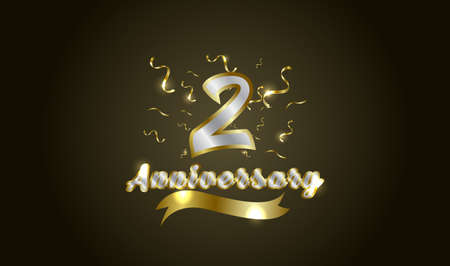1. Origins of Tea Leaf Reading in Ancient Cultures
Tea leaf reading, also known as tasseography, has a fascinating history that stretches back centuries and spans several continents. This unique form of divination began long before it became popular in the United States, with its earliest roots found in ancient China, the Middle East, and Europe. Understanding where tea leaf reading started helps us appreciate its deep cultural and spiritual significance.
The Birthplace: Ancient China
Many historians believe that tea leaf reading originated in China during the Tang Dynasty (618-907 AD), when tea drinking became a daily ritual for people of all social classes. Chinese monks and scholars would often gaze at the patterns left by tea leaves at the bottom of their cups, believing these shapes could provide insight into the future or offer spiritual guidance. In Chinese culture, this practice was closely tied to philosophies about nature, destiny, and harmony.
Spread to the Middle East
As tea trade routes expanded, the custom of reading leaves traveled westward to Persia (modern-day Iran) and other parts of the Middle East. Here, it blended with existing traditions of coffee ground readings and other forms of fortune-telling. In these societies, tasseography was not just about predicting the future—it was a valued part of social gatherings and storytelling. People would come together to share tea, swap stories, and interpret each others cups.
Arrival in Ancient Europe
Tasseography reached Europe through both trade and migration. It flourished especially among Romani communities in Eastern Europe during the 17th century. European practitioners adapted the art to suit their own customs, using local teas and emphasizing symbols familiar in Western folklore. Over time, tea leaf reading became associated with parlor games and mysticism among all social classes.
Cultural Roles Across Regions
| Region | Cultural Role | Spiritual/Social Importance |
|---|---|---|
| China | Philosophical reflection; personal insight | Harmony with nature; spiritual enlightenment |
| Middle East | Group storytelling; community bonding | Guidance for daily life; sharing wisdom |
| Europe | Social entertainment; folk traditions | Mysticism; connecting with ancestors |
The Universal Appeal of Tasseography
No matter where it was practiced, tea leaf reading served as more than just a way to predict the future. It brought people together, encouraged self-reflection, and became an important part of everyday rituals—laying the foundation for its continued evolution around the world.
2. The Spread of Tea and Tasseography to the Western World
Tea was introduced to Europe in the early 17th century, first making its way through Portugal and the Netherlands before becoming a staple in England. As tea became more widely available, it shifted from being an exotic luxury for the elite to a common beverage enjoyed by people from all walks of life. With the growing popularity of tea, new cultural practices developed around it, including tea leaf reading—also known as tasseography.
How Tea Became Popular in Europe
At first, only aristocrats and wealthy merchants could afford tea. However, as trade routes expanded and prices dropped, tea drinking spread to middle-class households and eventually to working-class families. Tea shops and public houses became social gathering spots where people would share stories, gossip, and fortunes.
| Time Period | Main Regions | Social Groups Involved |
|---|---|---|
| 1600s | Portugal, Netherlands, England | Nobility, Merchants |
| 1700s | England, France | Middle Class |
| 1800s | Widespread across Europe | Working Class, All Social Groups |
The Rise of Tea Leaf Reading Among Different Social Classes
Tasseography was originally practiced in upper-class drawing rooms as a form of entertainment during tea parties. Over time, it became popular with the general public. People would gather after meals or during afternoon tea to interpret the patterns left by tea leaves at the bottom of their cups. This informal form of fortune-telling became a cherished tradition in many households.
The Romani Influence on Tasseography
The Romani people played a significant role in spreading tasseography throughout Europe. Known for their deep traditions in fortune-telling and mysticism, Romani women often traveled from town to town offering readings. They brought their unique symbols and interpretation methods to mainstream European culture, blending their customs with local traditions.
Key Elements Brought by Romani Traditions:
- Symbolic meanings for shapes like hearts (love), birds (news), and circles (success)
- A focus on storytelling and intuition rather than strict rules
- An emphasis on personal connection between reader and querent (the person asking questions)
This fusion made tasseography both accessible and meaningful for people from all backgrounds. By the late 19th century, tea leaf reading had become a beloved pastime not just in Britain but also in America, carried over by immigrants who cherished these old-world traditions.

3. Techniques and Symbolism in Tea Leaf Reading
How Tea Leaf Reading Works
Tea leaf reading, also known as tasseography, is a fascinating practice that blends ritual, intuition, and symbolism. The process usually starts with a cup of loose-leaf tea, typically black or green tea without a filter. After sipping the tea, the drinker gently swirls the remaining liquid and leaves before turning the cup upside down onto a saucer. Once the excess liquid drains away, the patterns left by the tea leaves are interpreted for meaning.
Methods Used in Interpreting Tea Leaves
Over time, different cultures have developed their own methods for reading tea leaves. In modern America, readers often combine traditional techniques with a personal or intuitive approach. Some common steps include:
- Observation: Looking at where leaves cluster inside the cup (bottom, sides, near the rim).
- Pattern Recognition: Identifying shapes or symbols formed by the leaves.
- Storytelling: Weaving together symbols into a narrative relevant to the seeker’s life.
- Intuitive Sensing: Trusting gut feelings about what certain patterns mean in the moment.
Common Symbols and Their Meanings
Certain shapes appear frequently in readings and have acquired widely recognized interpretations. Here’s a handy table with some classic symbols you might find in an American tea leaf reading session:
| Symbol | Typical Meaning | Cultural Notes |
|---|---|---|
| Heart | Love, relationships, emotional connections | Often read as romance or family ties |
| Bird | News, travel, messages arriving soon | A symbol of freedom or movement |
| Ring | Commitment, marriage, agreements | May suggest engagement or business deals |
| Tree | Growth, stability, new beginnings | Tied to personal or career development in US culture |
| Spoon/Fork/Utensil | Nourishment, hospitality, family gatherings | A nod to American values of home and sharing meals |
| Dollar Sign ($) | Financial gain or concern about money matters | A modern symbol reflecting American life today |
| An Animal (Dog/Cat) | Loyalty (dog), independence (cat), friendship or self-reliance | Pets play a big role in many American households |
| Ladder/Staircase | Progress, ambition, climbing toward goals | Commonly seen as a sign of career advancement in US readings |
| Crescent Moon/Star | Hope, dreams, intuition at work | Might reflect spiritual exploration popular in modern America |
| Clover/Leafy Plant | Luck, opportunity, positive changes ahead | The four-leaf clover is especially meaningful for good fortune |
The Ritualistic Aspects of Tea Leaf Reading Over Time
The ritual side of tasseography has evolved along with changing social customs. Traditionally, it was performed during intimate gatherings or special occasions—often among family members or friends. This spirit continues in modern America: people gather for “tea parties” focused on mindfulness and connection as much as prediction.
Here are some elements that have persisted or changed over time:
- Cup Type: While ornate teacups were once common, today any favorite mug can be used; some Americans even use travel mugs for casual readings.
- Sipping Together: Sharing tea remains central—many see it as an act of hospitality and bonding.
- Meditative Mindset: Readers encourage participants to relax and set an intention before beginning—a practice similar to mindfulness trends popular in contemporary America.
- Diverse Influences: Modern practitioners may blend traditions from European tasseography with Native American symbolism or New Age philosophies.
This combination of old-world ritual and new-world creativity makes tea leaf reading uniquely adaptable—a living tradition woven into both ancient heritage and modern American culture.
4. Modern Adaptations of Tea Leaf Reading in America
Tea Leaf Reading Comes to the United States
Tea leaf reading, also known as tasseography, first made its way to the United States through waves of European immigrants in the late 19th and early 20th centuries. Many brought their cherished traditions with them, including the art of interpreting tea leaves. As tea became a more common beverage in American homes, especially after World War II, people found themselves curious about this mysterious and mystical practice.
Transformation Within American Culture
Once settled in America, tea leaf reading underwent changes to fit local customs and beliefs. Unlike its origins as a family or community ritual, Americans often embraced tasseography as a fun party activity or entertainment at social gatherings. Fortune tellers began offering tea leaf readings at fairs and private events, giving the practice a new life. Over time, it moved from being solely about predicting the future to also being a form of self-reflection and personal insight.
Key Differences: Traditional vs. American Tea Leaf Reading
| Traditional Tea Leaf Reading | American Adaptation |
|---|---|
| Passed down within families or small communities | Popularized at parties, fairs, and commercial settings |
| Focused on spiritual guidance and predictions | Blended with self-care, mindfulness, and entertainment |
| Often performed with loose-leaf black tea in fine china cups | Embraces various teas and mugs; less formal approach |
| Involves traditional symbols and meanings | Adapts symbols to modern life or personal interpretations |
The Resurgence: Holistic Wellness & Self-Care Trends
In recent years, interest in tea leaf reading has seen a major comeback in America. This revival is closely tied to the growing popularity of holistic wellness and self-care practices. Many people are seeking gentle ways to slow down, tune into their intuition, and connect with others. Tasseography fits naturally into these trends because it encourages mindfulness while enjoying a soothing cup of tea.
Why Americans Are Rediscovering Tea Leaf Reading Today:
- Mental Wellness: Offers a calming ritual that helps reduce stress.
- Community Connection: Provides a unique activity for friends and groups.
- Personal Insight: Encourages self-reflection through symbolic meaning.
- Cultural Curiosity: Appeals to those interested in exploring global traditions.
- Accessible Practice: Requires only tea, a cup, and an open mind.
The Modern Experience: How It’s Practiced Now
Todays’ tea leaf readings can be found everywhere—from trendy urban tea shops to virtual workshops online. People may host DIY gatherings at home or join organized classes led by experienced readers. Some even blend tarot cards or meditation into their sessions for a full-circle wellness experience. Whether you’re looking for guidance or simply want to enjoy an age-old ritual with friends, modern tasseography offers something for everyone who loves both tradition and discovery.
5. Tea Leaf Reading in Popular Culture and Everyday Life
Tea Leaf Reading in American Media and Literature
In the United States, tea leaf reading—also known as tasseography—has made appearances in movies, TV shows, books, and even comics. From classic detective stories to modern sitcoms, the image of someone peering into a teacup to predict the future often adds a touch of mystery or whimsy to the storyline. For example, in the popular “Harry Potter” series, Professor Trelawney uses tea leaves to teach divination, introducing the practice to a new generation of fans. Other American shows and novels use tea leaf reading as a plot device or a symbol of curiosity about fate and intuition.
| Media Type | Example | Role of Tea Leaf Reading |
|---|---|---|
| Movies/TV Shows | “Harry Potter,” “Gilmore Girls” | Mystical tool for predictions or adding humor |
| Books | “Agatha Christie’s mysteries” | A clue in solving crimes or deepening characters |
| Comics/Cartoons | “Archie Comics” | Light-hearted fortune-telling among friends |
The Role of Tea Leaf Reading in Social Gatherings
Beyond fiction, tea leaf reading has become a fun activity at parties, bridal showers, and book clubs across America. Friends gather over cups of loose-leaf tea not just to chat but also to explore what their tea leaves might reveal. It’s seen as an icebreaker that sparks conversation and laughter while connecting people to old-world traditions in a modern way.
Common Settings for Tea Leaf Reading Today
- Coffee shops hosting “tea & tarot” nights
- Spiritual bookstores offering workshops on tasseography
- Community centers with themed social events
- Private home gatherings for special occasions like birthdays or holidays
Tea Leaf Reading in Workshops and Spiritual Communities
Interest in holistic wellness and spirituality has brought tea leaf reading into American workshops, spiritual retreats, and metaphysical fairs. Many people attend these sessions out of curiosity about intuition and symbolism—or simply for a relaxing experience. These workshops often combine lessons on interpreting symbols with group discussions, helping attendees develop mindfulness while learning about themselves and others.
Benefits of Participating in Tea Leaf Reading Activities
- Encourages self-reflection and mindfulness
- Sparks creativity through symbol interpretation
- Builds community by sharing stories and insights
- Offers an alternative approach to personal growth and wellness
Today, tea leaf reading is both a nod to ancient traditions and a living part of American culture—woven into our entertainment, gatherings, and search for meaning.


